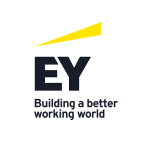It is easy to forget that the tax reorganisation regime in Colombia is not as neutral as one would hope, and through limitations, some neutrality transforms into tax deferrals and more recently, into potential loss of tax shields.
Tax elements of mergers
Suppose you are a foreign entity looking to purchase a business in Colombia and for that you incorporate an investment vehicle in the country – a special purpose vehicle (SPV) – to purchase the shares of a Colombian entity. Unless there are specific drivers to keep the SPV after the purchase, simplifying the structure would be a natural step, for which you would likely merge the SPV with the newly acquired company. You can conduct a tax-free upstream or downstream merger, and different factors are considered here to determine the most convenient or legally viable mechanism.
From a tax standpoint, care should be given because under the tax reorganisation regime the tax cost that survives is the tax cost of the company being ‘sold’. Tax law states that the company being sold is the company being absorbed, while the purchasing company is the absorbent. In other words, if the SPV is absorbing the newly acquired entity, the shareholders will have the tax cost represented in the purchase price paid for that entity.
However, if the absorbing entity is the business you acquired, the tax cost of the shareholders is basically the equity they placed into the SPV. As most acquisitions combine equity and debt to finance a purchase, on a downstream merger the shareholders lose the tax cost originated in the purchase price.
For example: The SPV is created with 300 in equity and 700 debt. SPV buys the shares in Company A for 1000. The tax cost of Company A shares for the SPV is 1000. The tax cost of the shares in the SPV is 300.
Upon a downstream merger, the shareholder remains with the tax cost of the SPV ‘sold’, thus their tax cost in the merged Company A would be 300, losing 700 in the operation.
You do not pay taxes upon the merger, but if you were to sell the shares in Company A for the same 1000 you paid, they would have to recognise a taxable gain of 700. Was there truly a gain? No, but the reorganisation regime eliminates your tax cost and creates a greater tax basis in the future.
Tax shields are other key elements that have become more restrictive when in the context of reorganisations processes.
In the context of a merger, the amount of losses that the absorbing company can use is limited by the equity contribution of that same company. This means that if the company being absorbed has 100 in tax losses, and its participation in the unified equity was 30%, the absorbing entity would only be entitled to use 30 of the total losses. This also meant that if the absorbing company has shields of its own, those tax shields were not affected as the limitation only applied to an absorbing entity in a merger, or to a resulting entity where a new company was created.
Judicial viewpoint
On October 2020, Decision 23419 of the Supreme Tax Court was issued stating that the limitation of the rule applies to any type of merger, which means that a company that has a tax shield will see its tax shield diluted by virtue of the merger, even if the absorbed entity has no tax losses.
This decision was a surprise, as tax authorities had already recognised that the limitation applied over the losses being shifted into an existing entity by way of the merger, but not over shields that the absorbing entity already had. This affects the tax-free condition on a reorganisation, opening a door to challenges and litigations over an issue that was already clear between the authorities and taxpayers.
Tackling limitations in Colombia
The indirect tax regime is another example where Colombia lacks in development. The regime taxes any type of international reorganisation without considering that such operations can happen within a group and no actual tax capacity is or should be manifested.
Tax free reorganisation regimes should be mindful that neutrality is not only manifested in the lack of payment of a tax, but also that the tax attributes, shields, etc. of such companies are not lost, restricted or otherwise punished.
In the context of a tax reform being prepared with the participation of a tax benefit committee of experts, it would be of great use for Colombia to revisit these rules and ensure that such systems are properly constructed to guarantee neutrality. Colombia should build on experiences from the US and other countries in the OECD (as Colombia is now a member of), to make the system more balanced and competitive in an international context as the country seeks to remain competitive and attract investments.
Aleksan Oundjian
Partner, EY Colombia












